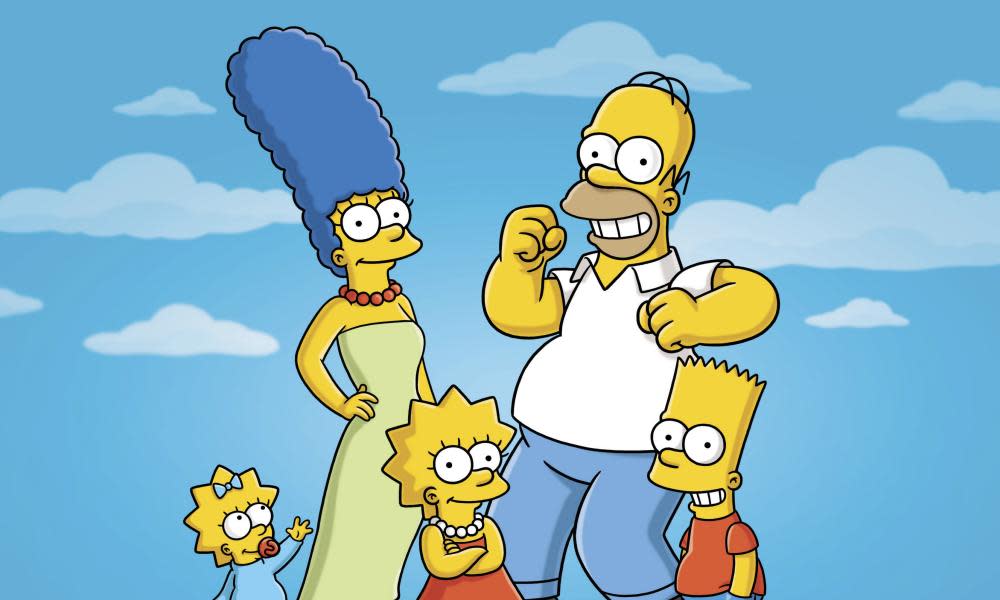When good TV goes bad: how The Simpsons ended up gorging on itself

There was a time when The Simpsons wasn’t just the best thing on television, it was the best thing in life. At its zenith (which, as any true fan will know, was seasons one to eight during the 90s) the animated working-class residents of working-class US town Springfield had the power to make you feel everything there was to feel in less than half an hour. In its golden age, The Simpsons was silly, sweet, deep, fiercely political, absurd, sharp, sad and, above all, hilarious. Nothing before or since has matched its capacity to be at once so profoundly clever and so unbelievably stupid.
The joy begins with Danny Elfman’s retro theme tune and all the tiny variations in the opening sequences – from Bart’s chalkboard gags to Lisa’s sax solos – that never grow old or tired. A classic episode might be stuffed with a note-perfect cameo by Leonard Nimoy, a sophisticated plot, a song that – 20 years on – resides in my head as the most companionable of earworms, and more cultural references than JJ Abrams’s entire back catalogue. Yes, Marge Vs The Monorail (season four, episode 12), I’m looking at you.
The Simpsons has now been going for a whopping 28 seasons and more than 600 episodes. It is the longest-running US sitcom in history, is regularly voted the best, and even has the brilliantly Springfieldian dubious honour of having predicted the ascent of President Trump more than 16 years ago.
The problem is that its longevity has become its achilles heel. How, after all, could a series about a family that, according to the unwritten law of animation, never ages, changes, or learns from its mistakes, keep going for nearly 30 years? That’s a lot of Homer strangling Bart, Marge being a goddess, Bart making prank calls, Lisa being ignored and Maggie almost getting killed.
The Simpsons probably jumped the shark about 400 episodes ago. Like the souring of any major relationship, it’s hard to pinpoint the precise moment when its yellow sweetness began to pale. When Homer was no longer a flawed but essentially lovable everyman but what he had always threatened to be: a lazy, selfish, cowardly, Duff-swilling oaf? When it became criminally unfair that Lisa, the proto-Hermione whose intellect is forever overshadowed by her idiot brother, was still being ignored? When the exceptional cast of supporting characters, from Comic Book Guy to Groundskeeper Willie, flattened into their own caricatures?
By the time that 2014’s annual Treehouse of Horror Halloween special came around and the Simpsons were confronted with doubles of themselves in a satirical swipe at the series’ own repetitiveness, it had long been all over. But that’s the nature of great satire: it ends up gorging on itself.
Nevertheless, The Simpsons’ 90s heyday remains a generation’s first experience of binge-watching. This meant many of us consumed a lot of the show’s famed cultural references back to front, which in itself is a kind of Simpsonian postmodern joke. I saw A Streetcar Named Marge (season four, episode two) long before I encountered A Streetcar Named Desire. Decades later, thanks to the big-hearted brilliance of The Simpsons, I’m still a bit miffed that Tennessee Williams’s masterpiece doesn’t end with a jolly musical number called You Can Always Depend on the Kindness of Strangers.

 Yahoo News
Yahoo News 
